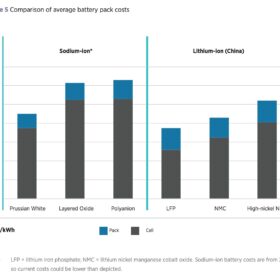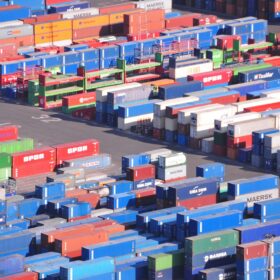China has approved a new plan to tap its vast desert solar potential while addressing land degradation.
The Photovoltaic Desertification Control Plan (2025-30) – released by the National Forestry and Grassland Administration, the National Development and Reform Commission (NDRC), and the National Energy Administration (NEA) – aims to install 253 GW of solar capacity and rehabilitate 1.66 million acres (673,670 hectares) of desertified land by 2030.
The initiative targets the “Three North” region – northern, northeastern, and northwestern China – which includes eight major deserts and four sandy regions spanning more than 100 million hectares. These areas receive some of China’s highest solar irradiation but face extreme ecological fragility, with limited water, sparse vegetation, and high wind erosion.
Authorities said solar deployment must follow “ecological priority and coordinated development.” The plan divides the region into three climate zones and five priority development areas, including the fringes of the Taklimakan and Tengger deserts. It calls for pilot projects that integrate solar with land rehabilitation and includes safeguards for site selection, construction, and operations to limit ecological impact.
While the economic advantages are clear – desert solar farms offer low land costs, high irradiation, and favorable electricity prices – the plan also targets reduced afforestation costs. Conventional tree-planting can cost up to CNY 12,000 ($1,650) per acre, while solar-linked approaches can lower that to CNY 1,800 to CNY 3,000, due to revenue from electricity generation.
Additional income could come from carbon credits, government subsidies for land restoration, and co-located agriculture or livestock. The Kubuqi project in Inner Mongolia, for example, combines 2 GW of solar with tomato and desert herb cultivation, generating over CNY 1 billion per year. Battery storage and hydrogen facilities further boost the projects’ economic and energy value.
Challenges remain. Grid infrastructure in remote areas is often inadequate to handle added generation, and some developers focus on capacity rather than ecological integration.
To address this, Beijing directed local governments to adopt integrated planning, involve farmers and communities, and encourage innovation. If successful, the plan could serve as a model for sustainable development in fragile environments.
As with other major infrastructure projects in China, the plan’s rollout will be guided by detailed actions under the upcoming 15th Five-Year Plan. Large state-owned energy firms are expected to lead implementation, potentially providing strong support for China’s solar supply chain.
This content is protected by copyright and may not be reused. If you want to cooperate with us and would like to reuse some of our content, please contact: editors@pv-magazine.com.








By submitting this form you agree to pv magazine using your data for the purposes of publishing your comment.
Your personal data will only be disclosed or otherwise transmitted to third parties for the purposes of spam filtering or if this is necessary for technical maintenance of the website. Any other transfer to third parties will not take place unless this is justified on the basis of applicable data protection regulations or if pv magazine is legally obliged to do so.
You may revoke this consent at any time with effect for the future, in which case your personal data will be deleted immediately. Otherwise, your data will be deleted if pv magazine has processed your request or the purpose of data storage is fulfilled.
Further information on data privacy can be found in our Data Protection Policy.